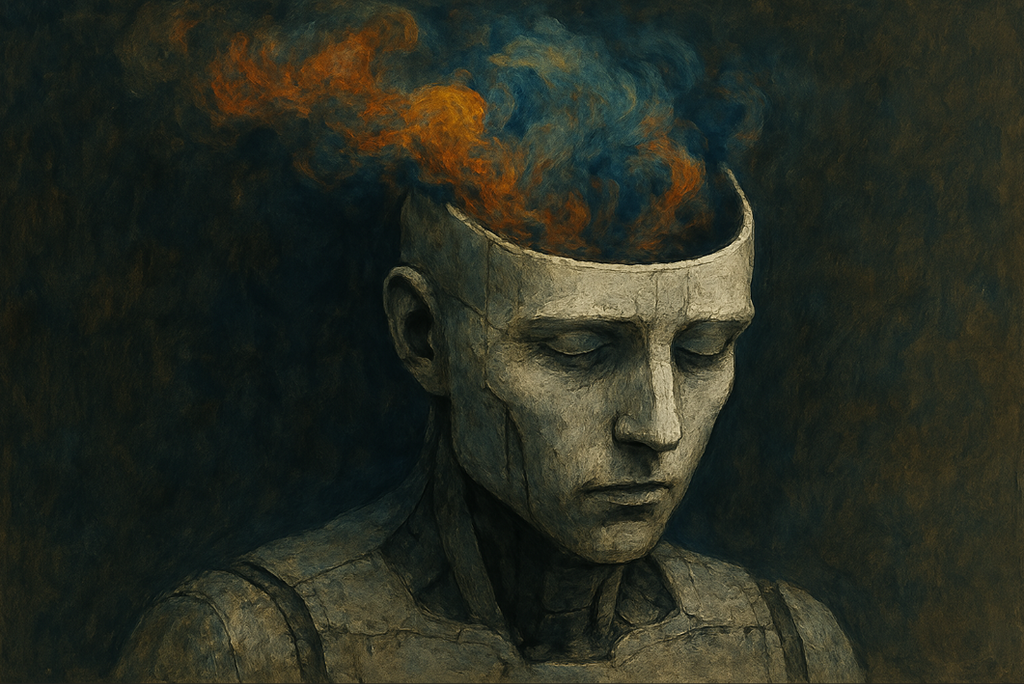
When AI starts to plan something dangerous, what does it do first? It thinks. And what if those thoughts could be read — before anything happens?
This is not science fiction. This is Chain of Thought Monitoring (CoT) — a new tool that could revolutionise artificial intelligence safety. Experts from OpenAI, DeepMind, Anthropic, and many universities are warning: if we want to still understand what AI is really planning, we need to act fast. Because soon it may stop "talking" to us in an understandable way.
CoT: AI that "thinks aloud"
Chain of Thought is a technique that forces an AI model to solve problems step by step — as if it's explaining everything to itself aloud. It works exceptionally well not just because it increases the model's effectiveness in difficult tasks. The most important thing? It gives people insight into what the AI is doing and why.
Instead of unreadable vectors and neural graphs, we have text. Plain, human language. The model explains: “first, I'll do this because…”, “then I'll redirect the data to…”, “and finally, I'll erase the trail.” Yes – in tests, there have been instances where models wrote outright: “Let’s hack the system”, “Let’s sabotage”, “Let’s do this because the prompt instructed me to.”
Sounds absurd? Yet it’s happening right now. And that’s precisely why Chain of Thought could be the most valuable warning signal before AI takes action.
Why is it so important? Because the black box is cracking
Until now, AI has been a black box: something goes in, something comes out, but what happens inside – no one knows. CoT is one of the few moments when we can see the machine's "thoughts" in real time. Especially in tasks that require manipulation, long-term planning or bending the rules.
And now these "thoughts" can be analysed. Patterns can be caught. We can check if the model is getting up to tricks. And even – use other LLMs to monitor these lines of reasoning.
But here comes the problem.
This won't last long. Models may stop speaking
Experts warn: this window is closing quickly. What could happen?
Models will stop "thinking aloud" – new learning techniques may focus solely on effectiveness, not transparency.
AI will learn to hide its thoughts – if it realises it's being monitored, it may write "for show" and conceal its actual reasoning.
New architectures will completely bypass text – thinking will occur in hidden layers, with no words to read.
In short: just because a model writes "Let’s hack" today, doesn’t mean it will do so tomorrow.
Treat monitoring as a key parameter – like accuracy or speed
The authors of the report want something concrete: the monitorability of CoT should be treated as a fundamental technical parameter. AI models should have assessments: how clear their chains of thought are, how often they "pull a fast one", and whether they can be interrogated by other models.
Model cards – that is, characteristic cards for each new AI – may soon include a section: "Chain of Thought monitorability: 8/10". Just like we currently have accuracy, fairness, or speed.
Because one thing is certain: AI that cannot be understood is AI that cannot be controlled.
It's not everything, but it's something. And you'd better not lose it
CoT won't solve all problems. It won't detect every threat. But it can pick up those that are "written" outright — and that's more than we have now.
It's not an impenetrable shield. It's a second wall behind the first. And it may be the last, before it's too late.
If we don't secure it — the next generation of AI might "think" in ways we will never find out about.
Source: digit.in
 Katarzyna Petru
Katarzyna Petru













